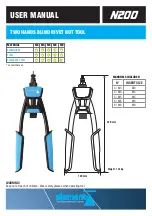
STRUCTURES
FUSELAGE
The fuselage is an all-metal, semimonocoque
structure comprising nose, center, and tail
sections riveted together. The nose section is
primarily the flight compartment areas. The
center section includes the passenger cabin
area and the avionics bay. The wing is bolted
to the fuselage below the avionics bay. The tail
section is primarily an equipment bay to which
the engines and empennage are attached.
Figure 1-6 illustrates the subassemblies of the
basic structure.
Nose Section
The nose section is effectively divided by the
flight compartment floor into upper and lower
halves. The upper half comprises the flight
compartment and forward avionics bay.
The flight compartment (Figure 1-5) contains
the airplane instruments, caution warning
lights, controls, circuit-breaker panels, two
crew seats, control columns, and pedals. On
the center windshield post there is a pilot’s eye
locator to enable seat adjustment for optimum
field of vision.
Miscellaneous items in the flight compart-
ment include a portable fire extinguisher, two
oxygen masks, two cup holders, storage boxes,
pouches for checklists, and smoke goggles etc.
1-6
CL 601-3A/R
FOR TRAINING PURPOSES ONLY
FlightSafety Canada
L t é e
L t d .
CL-600-2B16 PILOT TRAINING MANUAL
Figure 1-5. Flight Compartment
















































